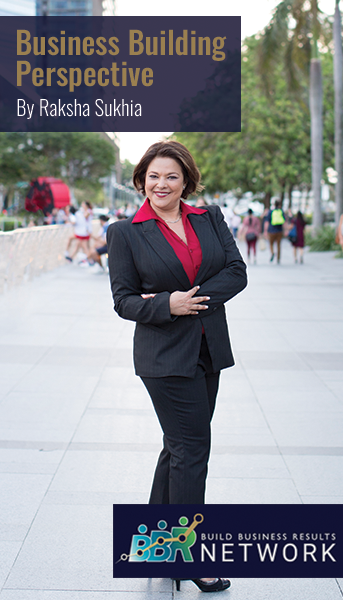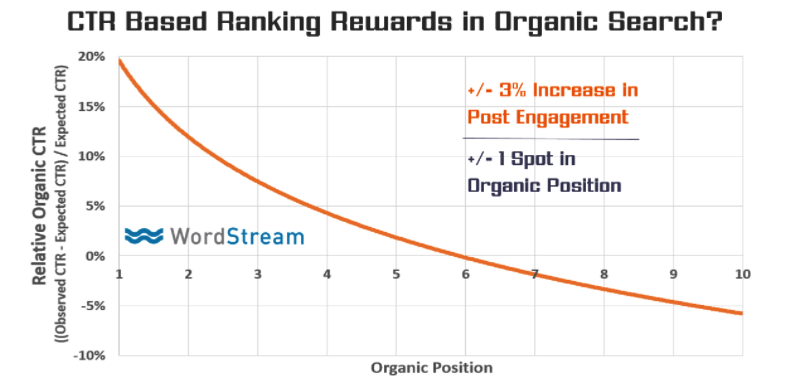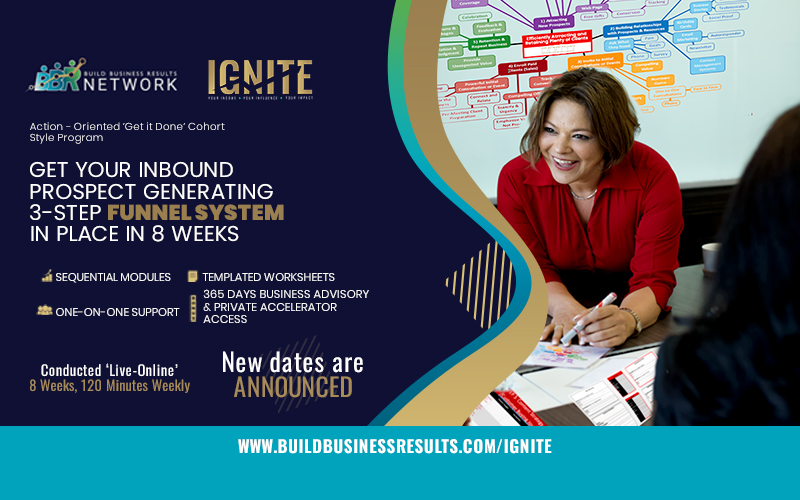7 Ways to Improve Your Organic CTR (Click-Through Rate)

Improving Google Ads Click Thru Rate (CTR) sounds easy, doesn’t it? Just write your adverts, add some keywords, enter your card details and watch the sales and enquiries start flowing in, right? Well not exactly, as there is a little more to it than that especially now with Google’s recent changes and the rise of mobile traffic. Gone are those days of throwing money at it and seeing what sticks.
If you don’t structure your Google Ads account well enough or manage it effectively, the click through rates of your adverts could be low and you’re basically giving your competition a helping hand by increasing their ads CTR.
See you on the action-field,
Raksha Sukhia, SMB Growth Expert,
Founder BBR Network. #bbrnetwork
Anyone who’s ever even dipped a toe in performance marketing has heard of CTR. CTR, which stands for “click-through rate,” is a calculation of how many people clicked on an ad (clicks) divided by the number of times the ad was displayed (impressions).
What is CTR?
Ad clicks ÷ Ad impressions = Click-Through Rate
As one of the classic performance marketing metrics, you’ll find a lot with CTR. But CTR is much more than a metric. In fact. Since advertisers typically pay publishers for each click on an ad, CTR affects the financial results of both sides of the advertising partnership.
Therefore, in light of the importance of CTR in your daily PPC activities, we have summarized 7 things you really need to know about your CTR. Just by internalizing these points, you will have a great understanding of how CTR works and what you can do with it to improve it then it is today.
7. Why is CTR a Key Metric?
In general, a high CTR has been shown to be associated with higher conversion rates. This is probably related to the fact that if people click on your ad, there is something attractive about it. In turn, they are more likely to be enthusiastic about your offer and follow your call to action.
Also, if more people click, the engagement rate will be higher, the Quality Score will improve, the cost per click will be lower, and the impression share will also increase. A good CTR has a ripple effect, creating a complete chain of positive results.
But taken together with your other KPIs, it’s even more powerful
Keep in mind that CTR is a measure of how many people clicked on your ad. It doesn’t reflect the conversion rate on your landing page, like the number of people who filled out a form or contacted your sales rep.
On its own, CTR can tell you how engaging your ad is by the number of clicks it generates, but if you’re looking for conversions, not just viewers, then CTR alone won’t say much.
For example, if an ad has a very high CTR, but a low conversion rate, it is probably a sign that the audience you are reaching is too broad, or perhaps the ad message is not aligned correctly with the landing page. Use your CTR in conjunction with other metrics to get the complete picture.
6. What’s A “good” CTR? It Depends…
What is considered a good CTR varies greatly and also depends on the platform? For paid AdWords search, the 2% CTR is average, and anything above that number is considered good.
However, for Facebook ads, the average CTR is 0.9%. Another variable is the type of sector it serves. This page has some interesting charts showing the CTR averages for various categories. Top 3 CTR Performances? Dating and relationships, finance and insurance, and B2B.
In addition to keeping track of the industry average, remember: the toughest competitor you face is yourself. Try to beat your own record and focus on achieving a higher CTR in your next campaign than the previous one.
5. Does CTR Affect Your SEO?
Your ranking in search engines is based in part on the popularity of your site, and popularity is measured by page views. The more clicks your page receives, or in other words, the higher your CTR, the more valuable it will be considered by the search engine. Hence, your page will rank higher naturally. Conclusion? A higher CTR means better SEO.

It’s about quality and relevance. Search engines study participation to determine which pages are best suited for the search query. So make your site the ‘party that everyone wants to attend’, and improve your CTR to boost your SEO.
4. Better Ad Copy Can Go A Long Way To Boosting Your CTR
Unless it’s one of the 50% (!) Of accidental clicks, a person clicks on your ad because they find it attractive or interesting. High CTR ads can “speak” to the target audience. On the other hand, if your ad has a low CTR, you can improve it by working on the ad text, message, or layout to make it more attractive to your audience.
Take a look at your high-performing ads. What words or phrases do you use? What is the call to action like? What stands out in the design? Try to replicate the things that make your ads work for the best results.
3. Keywords Count – A Lot
It is not just a copy that must be convincing. You also need to work on your keywords. And the key is this: be specific. Here’s an example: Suppose you are a baker looking for cupcake catering for events. The keyword “cupcake” is very broad, but if you restrict your keyword to ‘special cupcakes catering’, you will reach a much more targeted audience.
By choosing a specific keyword, you can sacrifice the number of impressions and clicks, but you will likely achieve a higher CTR. This is because your ad is attracting more qualified traffic to start with. In short, don’t go crazy with keywords – it’s a lot smarter in terms of CTR to focus on a solid main keyword or a long-tail keyword.
2. Testing Is The Way To Success
PPC is all about testing what works and what doesn’t. It is very important to use A / B testing in your ads so that you can figure out how to increase your CTR. Check out this great list for some ideas on how you can test and tweak your ads.
It can be something seemingly as small as adjusting the punctuation, using numbers instead of words, or the way you formulated your call to action. Or maybe you need an image that has more emotional resonance.
Whatever it is, once your test results are conclusive, be sure to make any necessary changes to your ads. Then start the publishing cycle and try again. With a bit of sweat and a lot of perseverance, you can optimize your campaigns and make your CTR skyrocket.
But before we finish, we’d like to present some additional advice on how to increase your CTR.
1. Know Your Audience
“If you want to improve your CTR, start by really understanding your audience. Get inside their heads. Think about how they would describe the service or product they are looking for. Learn their language and use their lingo. Ignore the things that may seem important to you, but are just not for them.
This is not as easy as it sounds! It involves a deep understanding of your business, complex number processing, and analysis, but more importantly, it really means talking to your customers.
Every interaction you have with your customers is an opportunity to learn more about them. Don’t leave this vital information untapped! Find out what your ideal customer profile really looks like and make sure you take advantage of it at all times. “
Related Article
What’s a Good Landing Page Conversion Rate?
Business Agility Is the New Norm. Do You Have What It Takes?
Tags
#BBR Network, #Profitability, #Small Business Growth, #Small Business Marketing and Sales, #SMB, #SME, B2B, Build Business Results, Build Business Results (BBR), Build Business Results (BBR) Mastermind., Build Business Results (BBR) Network Business Advisory, Business Tips, Email Frequency, Email Marketing, Marketing, Raksha Sukhia











